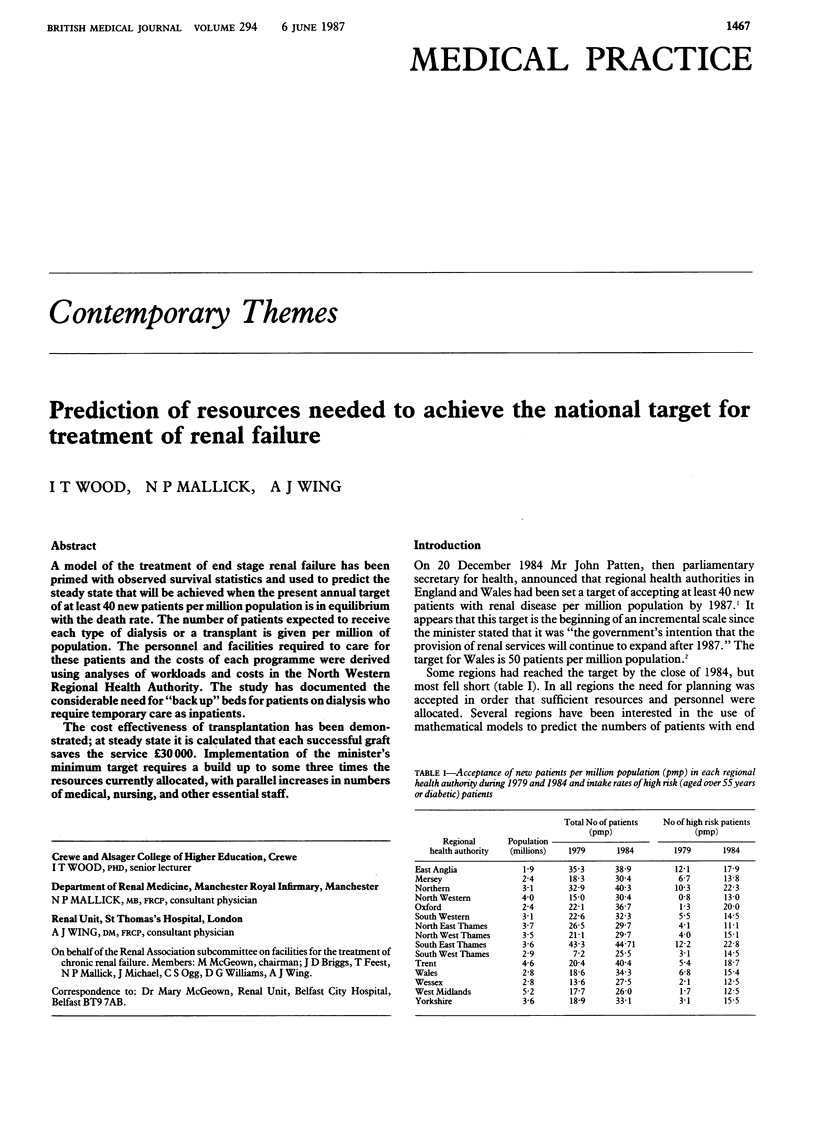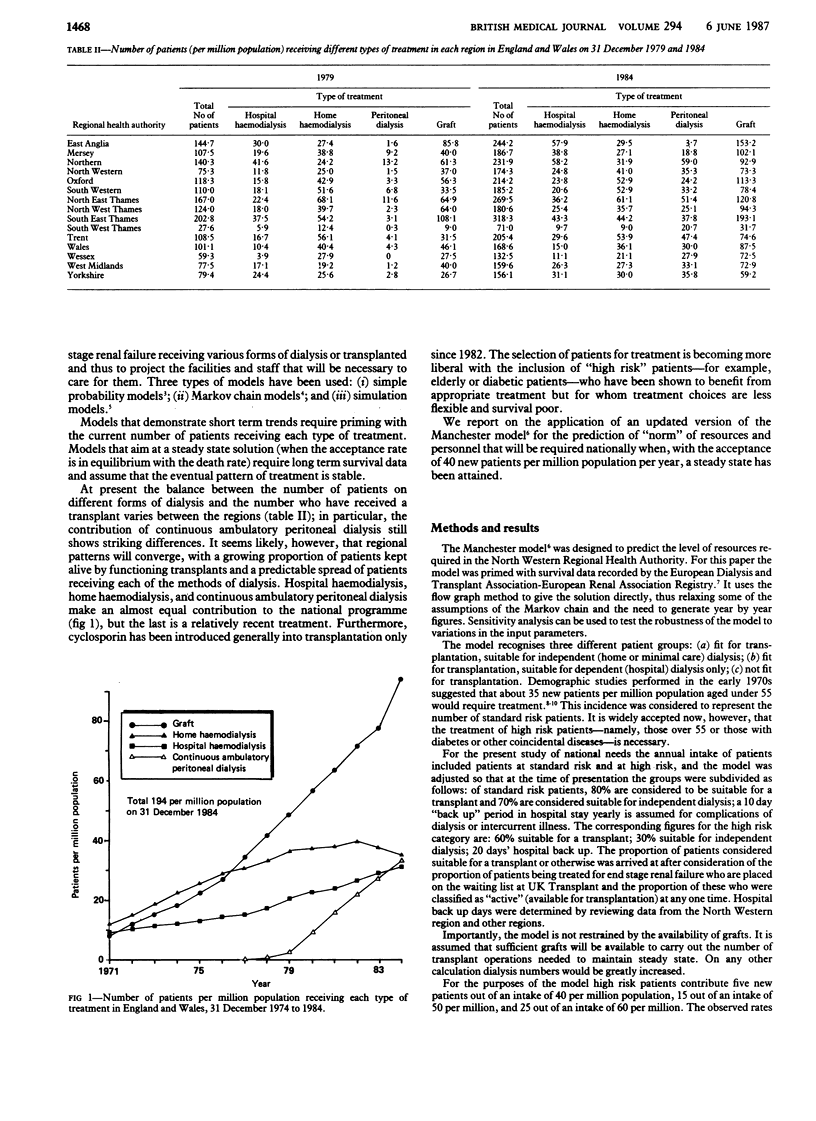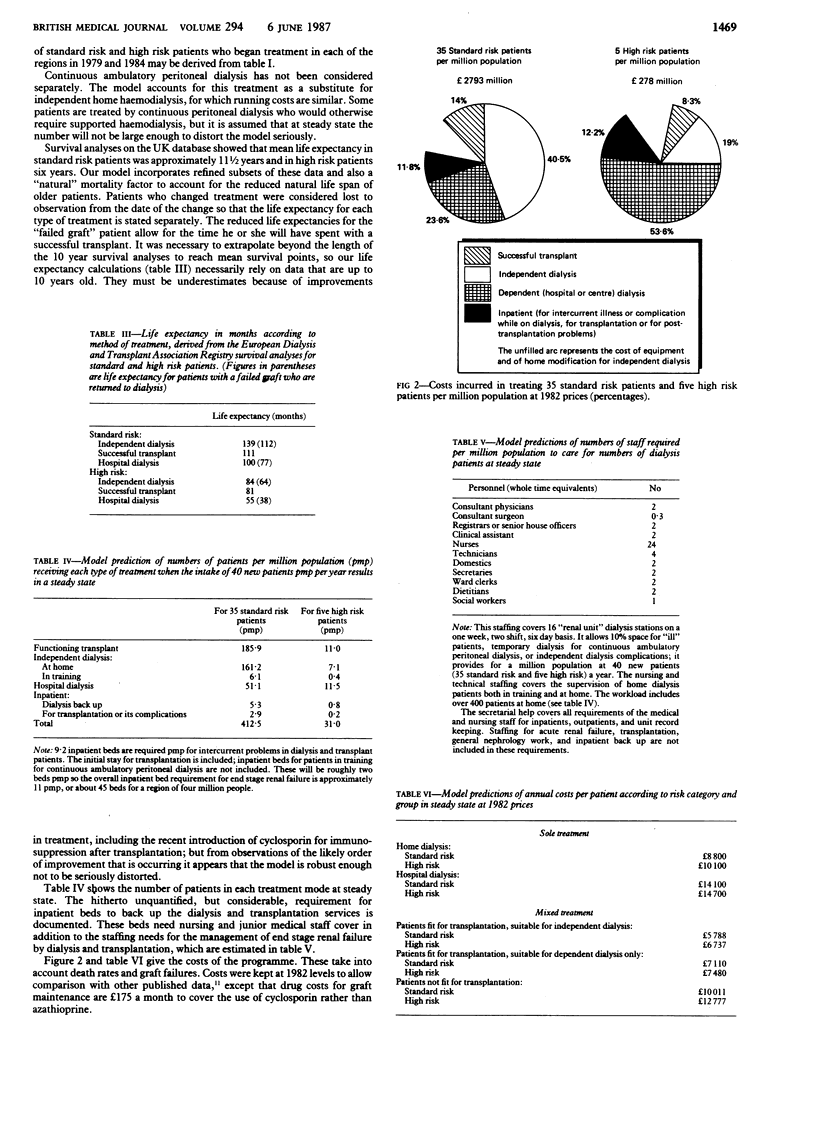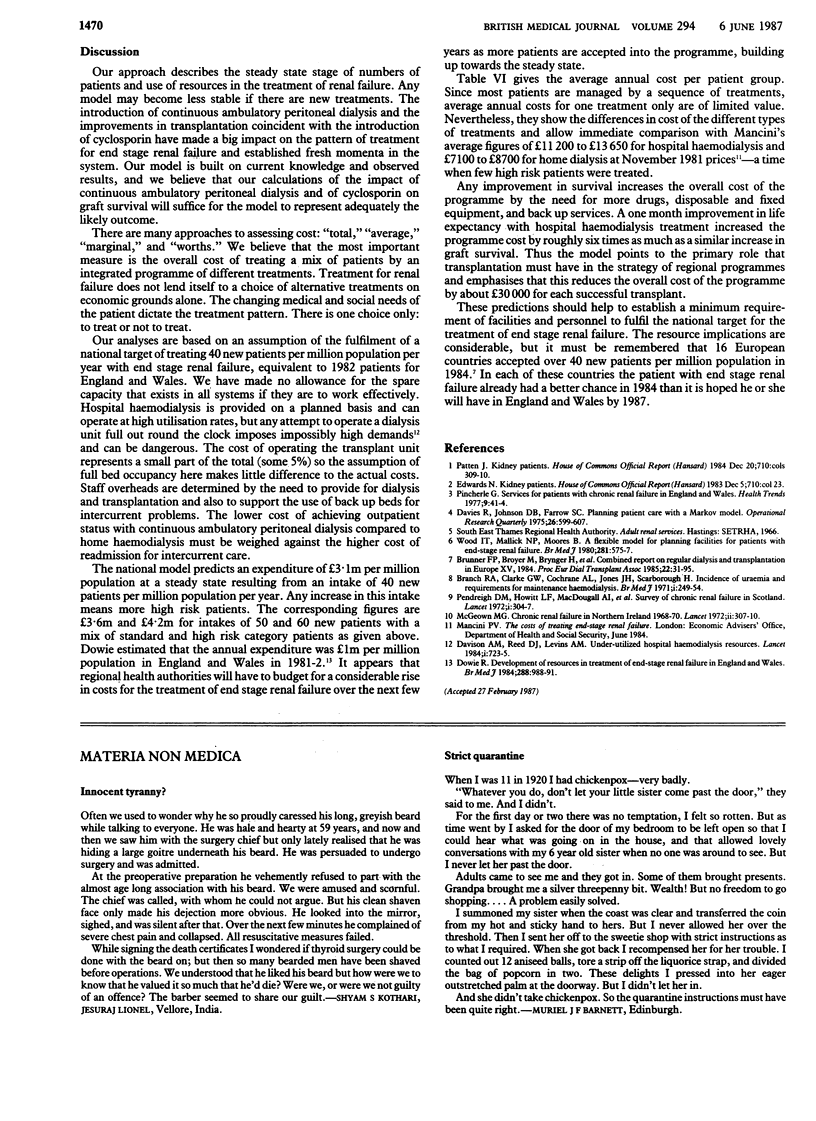Abstract
A model of the treatment of end stage renal failure has been primed with observed survival statistics and used to predict the steady state that will be achieved when the present annual target of at least 40 new patients per million population is in equilibrium with the death rate. The number of patients expected to receive each type of dialysis or a transplant is given per million of population. The personnel and facilities required to care for these patients and the costs of each programme were derived using analyses of workloads and costs in the North Western Regional Health Authority. The study has documented the considerable need for "back up" beds for patients on dialysis who require temporary care as inpatients. The cost effectiveness of transplantation has been demonstrated; at steady state it is calculated that each successful graft saves the service pounds 30,000. Implementation of the minister's minimum target requires a build up to some three times the resources currently allocated, with parallel increases in numbers of medical, nursing, and other essential staff.
Full text
PDF



Selected References
These references are in PubMed. This may not be the complete list of references from this article.
- Branch R. A., Clark G. W., Cochrane A. L., Jones J. H., Scarborough H. Incidence of uraemia and requirements for maintenance haemodialysis. Br Med J. 1971 Jan 30;1(5743):249–254. doi: 10.1136/bmj.1.5743.249. [DOI] [PMC free article] [PubMed] [Google Scholar]
- Davison A. M., Read D. J., Lewins A. M. Underutilised hospital haemodialysis resources. Lancet. 1984 Mar 31;1(8379):723–725. doi: 10.1016/s0140-6736(84)92232-3. [DOI] [PubMed] [Google Scholar]
- Dowie R. Deployment of resources in treatment of end stage renal failure in England and Wales. Br Med J (Clin Res Ed) 1984 Mar 31;288(6422):988–991. doi: 10.1136/bmj.288.6422.988. [DOI] [PMC free article] [PubMed] [Google Scholar]
- McGeown M. G. Chronic renal failure in Northern Ireland, 1968-70. A prospective survey. Lancet. 1972 Feb 5;1(7745):307–310. doi: 10.1016/s0140-6736(72)90305-4. [DOI] [PubMed] [Google Scholar]
- Pendreigh D. M., Howitt L. F., Macdougall A. J., Robson J. S., Heasman M. A., Kennedy A. C., MacLeod M., Stewart W. K. Survey of chronic renal failure in Scotland. Lancet. 1972 Feb 5;1(7745):304–307. doi: 10.1016/s0140-6736(72)90304-2. [DOI] [PubMed] [Google Scholar]
- Wood I. T., Mallick N. P., Moores B. A flexible model for planning facilities for patients with end-stage renal failure. Br Med J. 1980 Aug 30;281(6240):575–577. doi: 10.1136/bmj.281.6240.575. [DOI] [PMC free article] [PubMed] [Google Scholar]


